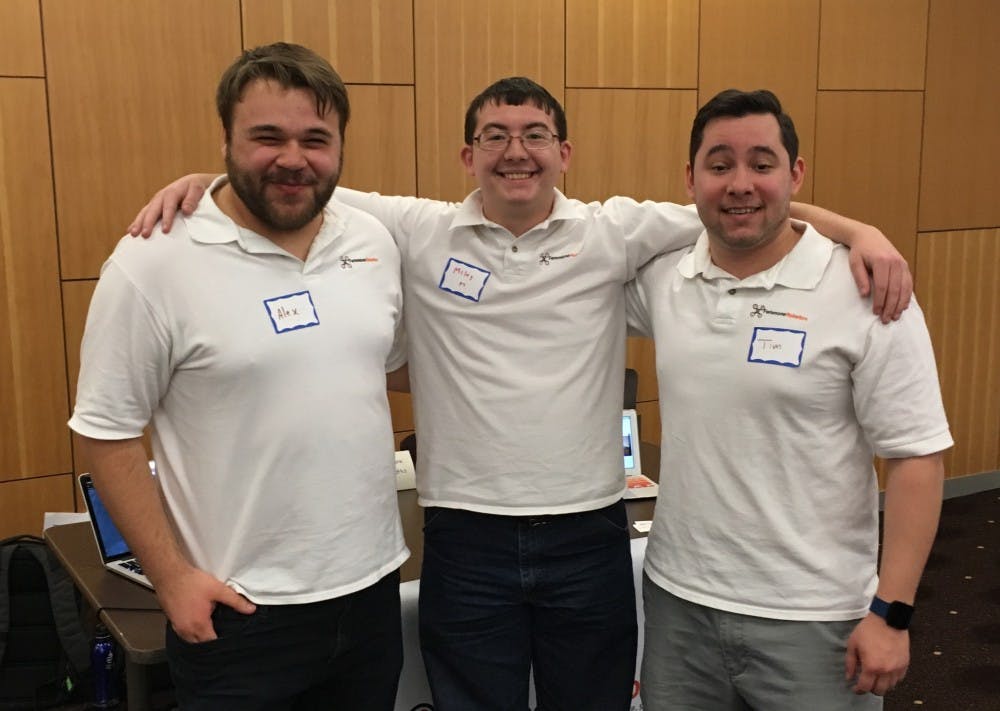Tactical drones don't typically evoke an image of safety, but a startup headquartered at the ASU Polytechnic campus wants to change that. Feromone Robotics is developing a drone to save lives.
"The founders were interested in how ants communicate," Tim Medina, Feromone's lead mechanical engineer, said. "I know it's a little strange, but they actually communicate in swarms via scent and other means, so that's how we came up with 'Feromone', and that's why our drones actually work with swarm technology."
Feromone aims to use this swarm principle to help emergency responders coordinate rescue efforts.

"So Feromone Robotics is a company to bring drones into search and rescue, and make it safe, simple and effective," Miles Mabey, the team's lead electrical engineer, said. "We're basically making specialized drones for firefighters or search and rescue workers that's geared toward helping them with their job."
To do this, the team decided to focus on three main tenets.
The first is communication: the Feromone team has devised a way of using the drones as radio relays, so that a weak signal has enough conduits to transmit over large distances.
The next is situational awareness. The team said that simply having a bird's eye view was invaluable to search and rescue teams, but they decided to take that advantage a step further.
"So, we're putting on cameras; a thermal imaging camera and a regular camera, so that they get a live feed of what's happening," Mabey said.
This allows whoever is in charge to sit at a monitor and track areas of a building that are in distress.
Lastly, Mabey said that the Feromone team focused on autonomy.
"We've talked to a lot of firefighters, and one of the biggest things they've harped on is (the drones) can't get in their way," Mabey said. "They have a job to do, they've gotten it down to a science, if they've got extra stuff they've got to worry about, it's going to get in the way and cause problems."
To avoid this hassle, the Feromone team has worked on developing an application that runs on a laptop or tablet that allows the user to request that a drone perform a task, and then the drone does it with no further input. In this regard, the team says that they offer the only drone capable of this sort of functionality.
"At the moment there's this company called Mouser," Alex Opstad, Feromone's lead marketing and business specialist, said. "It's kind of similar to what we do, but they're more geared toward broader emergency situations."
Opstad said the competitors in the space do not offer the same capabilities as the Feromone drones, which in addition to thermal imaging, come equipped with air quality sensors and augmented battery life.
Finding this Goldilocks combination of features has posed quite a challenge to the Feromone team. Opstad said that juggling battery life, price and artificial intelligence has kept the team on their toes.
"Finding that sweet spot when it comes to battery life so it's actually able to achieve the mission, and also not being absurdly overpriced," Opstad said. "That's been kind of the challenges we've had."
Reach the reporter at sdeadric@asu.edu or follow @deadrick_sam on Twitter.
Like The State Press on Facebook and follow @statepress on Twitter.




